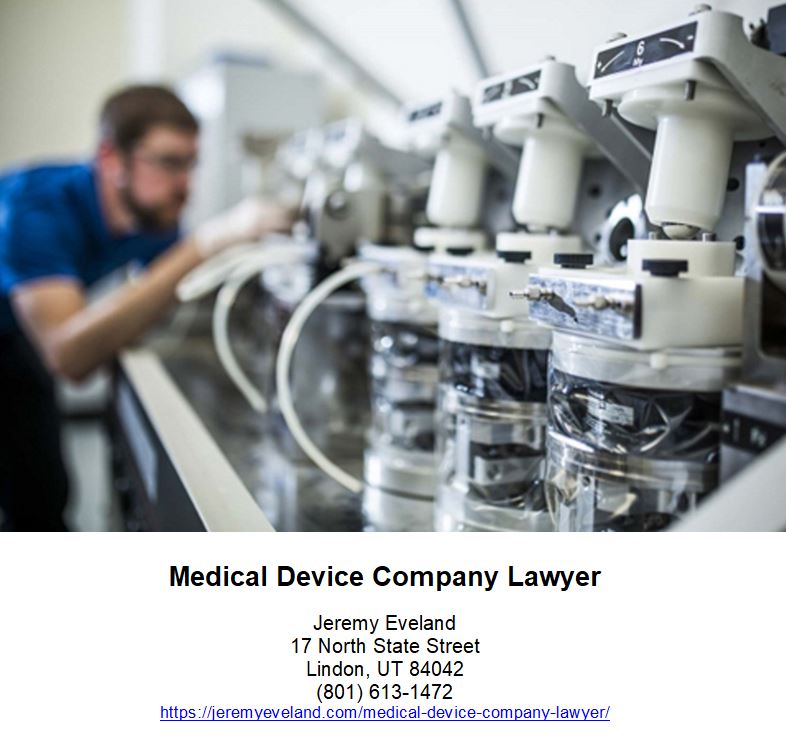-
Attorney at Law
- Introduction
- The Power of Networking: How to Leverage Your Connections for Business Success
- The Benefits of Outsourcing: How to Maximize Efficiency and Cut Costs for Business Success
- The Art of Negotiation: How to Get the Best Deals for Your Business
- The Value of Strategic Planning: How to Set Goals and Achieve Them for Business Success
- The Impact of Technology: How to Use Technology to Streamline Processes and Increase Profits
- Q&A
“Unlock Your Business Potential with Business Success!”
Introduction
Business success is the result of hard work, dedication, and a commitment to excellence. It is the result of a combination of factors, including the right strategy, the right team, and the right resources. It is also the result of a willingness to take risks and to learn from mistakes. Business success is not something that happens overnight; it takes time, effort, and dedication to achieve. This article will discuss the key elements of business success and provide tips on how to achieve it.
The Power of Networking: How to Leverage Your Connections for Business Success
Networking is an essential tool for business success. It is a powerful way to leverage your connections and build relationships with potential customers, partners, and colleagues. By networking, you can gain access to valuable resources, knowledge, and contacts that can help you grow your business.
This is part of the topic of Business Consulting.
The key to successful networking is to be proactive and consistent. Start by identifying the people and organizations that can help you reach your goals. Reach out to them and introduce yourself. Make sure to be friendly and professional. Ask questions and listen to their answers. Show genuine interest in what they have to say.
Once you have established a connection, nurture it. Follow up with them regularly and stay in touch. Offer to help them in any way you can. This will help you build trust and credibility.
Networking is also a great way to stay informed about industry trends and developments. Attend conferences, seminars, and other events related to your field. This will help you stay up to date on the latest news and developments.
Finally, don’t forget to give back. Offer to mentor someone or volunteer your time and expertise. This will help you build your reputation and create a positive image for your business.
By leveraging your connections and networking effectively, you can open up a world of opportunities for your business. With the right approach, you can build relationships, gain access to valuable resources, and stay informed about industry trends. With the power of networking, you can take your business to the next level.
The Benefits of Outsourcing: How to Maximize Efficiency and Cut Costs for Business Success
Outsourcing is a popular business strategy that can help companies maximize efficiency and cut costs. By outsourcing certain tasks, businesses can focus on their core competencies and reduce overhead costs. This article will discuss the benefits of outsourcing and how businesses can maximize efficiency and cut costs for business success.
The primary benefit of outsourcing is cost savings. By outsourcing certain tasks, businesses can reduce overhead costs associated with hiring and training employees. Additionally, outsourcing can help businesses save money on labor costs, as they can hire contractors or freelancers who charge lower rates than full-time employees. Furthermore, outsourcing can help businesses save money on equipment and technology costs, as they can use the resources of the outsourcing company.
Outsourcing can also help businesses increase efficiency. By outsourcing certain tasks, businesses can free up their internal resources and focus on their core competencies. Additionally, outsourcing can help businesses reduce the time it takes to complete tasks, as the outsourcing company can provide specialized expertise and resources. Furthermore, outsourcing can help businesses reduce the risk of errors, as the outsourcing company can provide quality assurance and testing services.
In order to maximize the benefits of outsourcing, businesses should carefully evaluate their needs and select an outsourcing partner that can meet their requirements. Businesses should also ensure that the outsourcing partner is reliable and trustworthy. Additionally, businesses should establish clear communication channels with the outsourcing partner to ensure that tasks are completed on time and to the highest standards.
Finally, businesses should ensure that they have a clear understanding of the costs associated with outsourcing. This includes the cost of the outsourcing services, as well as any additional costs associated with the outsourcing process. By understanding the costs associated with outsourcing, businesses can ensure that they are getting the best value for their money.
By taking advantage of the benefits of outsourcing, businesses can maximize efficiency and cut costs for business success. By carefully evaluating their needs and selecting an outsourcing partner that can meet their requirements, businesses can ensure that they are getting the best value for their money. Additionally, businesses should establish clear communication channels with the outsourcing partner to ensure that tasks are completed on time and to the highest standards. By following these steps, businesses can maximize the benefits of outsourcing and ensure business success.
The Art of Negotiation: How to Get the Best Deals for Your Business
Negotiation is an essential skill for any business owner or manager. It is a process of communication between two or more parties to reach an agreement on a particular issue. Negotiation can be used to resolve disputes, secure better deals, and create mutually beneficial relationships.
The art of negotiation requires a combination of knowledge, skill, and strategy. To be successful, you must understand the interests of all parties involved, be able to identify and articulate your own interests, and be able to craft a deal that meets the needs of everyone involved.
Before entering into a negotiation, it is important to do your research. Understand the other party’s interests and objectives, and be prepared to explain your own. Consider the different options available and the potential outcomes of each.
When negotiating, it is important to remain professional and courteous. Listen carefully to the other party and be willing to compromise. Be prepared to make concessions, but don’t give away too much.
It is also important to be aware of the different tactics that can be used in negotiations. These include making offers that are too good to refuse, using deadlines to create urgency, and making small concessions to gain larger ones.
Finally, it is important to be patient and persistent. Negotiations can take time, and it is important to remain focused on the end goal. With the right approach, you can get the best deals for your business.
The Value of Strategic Planning: How to Set Goals and Achieve Them for Business Success
Strategic planning is an essential tool for business success. It helps organizations set goals and develop strategies to achieve them. By taking the time to plan, businesses can identify their strengths and weaknesses, set realistic goals, and develop strategies to reach those goals.
The first step in strategic planning is to identify the organization’s mission and vision. This helps to define the purpose of the organization and the direction it wants to take. Once the mission and vision are established, the organization can then set goals that are aligned with the mission and vision. Goals should be specific, measurable, achievable, relevant, and time-bound (SMART).
Once the goals are set, the organization can then develop strategies to reach those goals. Strategies should be tailored to the organization’s strengths and weaknesses and should be designed to maximize the organization’s resources. Strategies should also be flexible and adaptable to changing conditions.
The next step is to develop an action plan. This plan should include specific tasks, timelines, and resources needed to achieve the goals. It should also include a system for monitoring progress and evaluating results.
Finally, the organization should review and revise the plan regularly. This helps to ensure that the plan is still relevant and that the organization is on track to reach its goals.
Strategic planning is an important tool for business success. It helps organizations set goals and develop strategies to achieve them. By taking the time to plan, businesses can identify their strengths and weaknesses, set realistic goals, and develop strategies to reach those goals. With a well-developed plan, businesses can maximize their resources and increase their chances of success.
The Impact of Technology: How to Use Technology to Streamline Processes and Increase Profits
Technology has become an integral part of modern business operations. It has enabled companies to streamline processes, increase efficiency, and ultimately increase profits. In this article, we will discuss how businesses can use technology to their advantage and maximize their profits.
First, businesses should identify areas where technology can be used to streamline processes. This could include automating manual tasks, such as data entry, or using software to manage customer relationships. By streamlining processes, businesses can reduce costs and increase efficiency.
Second, businesses should invest in the right technology. Investing in the wrong technology can be a costly mistake. Businesses should research the available options and select the technology that best meets their needs.
Third, businesses should ensure that their technology is up-to-date. Technology is constantly evolving, and businesses should ensure that their systems are up-to-date with the latest advancements. This will help them stay competitive and maximize their profits.
Fourth, businesses should use data to make informed decisions. Technology can provide businesses with valuable insights into their operations. By analyzing data, businesses can identify areas of improvement and make decisions that will increase profits.
Finally, businesses should use technology to improve customer service. Technology can be used to provide customers with a better experience, which can lead to increased customer loyalty and higher profits.
By using technology to streamline processes, businesses can increase efficiency and maximize their profits. By investing in the right technology, keeping it up-to-date, using data to make informed decisions, and improving customer service, businesses can ensure that they are taking full advantage of the opportunities that technology provides.
Q&A
Q1: What are the key elements of business success?
A1: The key elements of business success include having a clear vision and mission, setting achievable goals, having a strong team, developing effective strategies, and having a good understanding of the market.
Q2: How can I measure my business success?
A2: You can measure your business success by tracking key performance indicators such as sales, profits, customer satisfaction, and employee engagement.
Q3: What are the most important skills for business success?
A3: The most important skills for business success include leadership, communication, problem-solving, decision-making, and financial management.
Q4: What are the biggest challenges to business success?
A4: The biggest challenges to business success include competition, changing customer needs, economic conditions, and technological advances.
Q5: What are the benefits of business success?
A5: The benefits of business success include increased profits, improved customer satisfaction, increased market share, and greater job security.
Business Success Consultation
When you need help with Business Success call Jeremy D. Eveland, MBA, JD (801) 613-1472 for a consultation.
Jeremy Eveland
17 North State Street
Lindon UT 84042
(801) 613-1472
Related Posts
Business Succession Lawyer Bountiful Utah
Concrete Pumping Business Lawyer



















